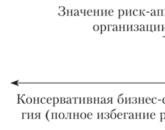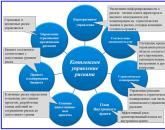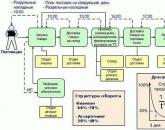Staffing table f t 3 staffing. What is the staffing of an organization? The procedure for the adoption of the SHR
The staffing table is a mandatory internal regulatory document of an organization containing data on its structure, the number of employees and the total payroll for the month.
Sample staffing in the form of T-3
Form of staffing in the form of T-3
Staffing: features of filling
In addition to the main functional information, the staff list lists the positions of employees, there is information about the salaries of the entire composition of the organization, the employee incentive system (various bonuses, allowances for overtime work, etc.), and the availability of vacancies.
Each enterprise has the right to develop its own staffing form, but taking into account all the necessary points, or use the unified form T-3, approved by the Decree of the State Statistics Committee of the Russian Federation No. 1 of January 5, 2004.
The staffing table may be required for verification by various supervisory and executive bodies: courts, labor inspectorate (checking the compliance of working conditions with the letter of the law), regional representatives of the Pension Fund (checking data on employee insurance), tax (checking the application of tax benefits), so draw it up need to be accurate and correct.
The staffing begins with the development of the structure of the enterprise and the order of the head to appoint a person responsible for filling out the T-3 form. This can be either an accounting officer, a secretary, an office manager, or an employee of the created personnel department, and even the head himself.
In addition, the order establishes the terms in which the staffing table must be drawn up, the terms for its coordination and approval.
How to draw up a staffing table
All-Russian classifier of professions of workers, positions of employees and wage categories (OK 016-94);
All-Russian classifier of occupations (OK 010-93);
Qualification directory of positions of managers, specialists and other employees;
unified tariff-qualification reference books of jobs and professions of workers by industry.
Salaries can be indicated not by a certain figure, but within certain amounts, for example, from 10,000 to 15,000 rubles. This is allowed for enterprises that are not required to strictly comply with the indicators of the Unified Tariff-Qualification Grid. This is usually done when the position of employees is called the same, but their qualifications, set of functions, work experience are different.
The incentive system (columns 6-8) should contain information for what and in what units the employee receives an incentive, i.e. it can be calculated not only in rubles, but also in percentages, coefficients, etc.
The total monthly amounts of payments for each position are indicated in column 9. At the bottom of the tabular part, a total is summed up and the entire salary fund of the organization for the month is indicated.
The date of drawing up the staffing table, the date of its approval (according to the order), the date from which the schedule begins to operate and the period of its validity must be indicated. As a general rule, the staffing table is drawn up for a period of one year.
The name of the organization must correspond to that specified in the Charter of the organization.
Entering the names of structural divisions (departments) in the staffing table - column 1, the positions of employees - column 3, especially if the employee is entitled to benefits or special conditions when working in this position, so as not to deprive him of these benefits, you should use the tariff and qualification reference books:
As a rule, this applies to municipal organizations and enterprises with "harmful" working conditions, while commercial organizations are free to enter almost any names of structural departments and positions into the staff list, guided only by common sense, traditional terminology and general definitions and concepts.
It makes sense to assign a structural unit code to each department: it can be used in the future when processing various business documents of the organization.
Salaries of employees, as well as allowances, other incentives, and the total amount of the monthly salary of the enterprise must be indicated in rubles.
If any positions in the enterprise are vacant, an entry is made in column 10 "Notes".
The compiled staff list is coordinated with the heads of structural divisions (departments), and given to lawyers for verification. Then make adjustments, if any.
If the staffing table has no comments, it is endorsed by the signatures of the head of the personnel service (if any), the chief accountant, and approved by order of the head.
The staffing form provides for its own filling features. Find out if you can do without the unified T-3 form and download an example of filling out the form and T-3 staffing forms in Excel and Word.
Read our article:
What information does the T-3 unified staffing form contain
Since 2013, unified forms of documents have ceased to be mandatory, but many employers continue to use them. All because they are familiar, convenient and fully meet the requirements of the law. And if necessary, the employer can always supplement them with the necessary data.
The T-3 staffing form is required for the employer to have (Article 57 of the Labor Code of the Russian Federation). The SR is approved by the order of the head, and its validity period is not limited. The schedule ceases to be valid from the moment a new document is issued.
Shtatka is a convenient mechanism for analyzing the composition of personnel and the payroll. It reflects not only occupied positions, but also vacant ones. The form is compiled for the entire organization as a whole (including separate divisions and branches).
We will consider in detail the T-3 staffing form and a sample of its completion for 2018.
Conventionally, the document can be divided into 3 parts:
- basic information (details of the document);
- tabular part (directly regular);
- responsible signatures.
Read also:
Basic information
First of all, in the form No. T-3, the name of the company is indicated, which must exactly correspond to the constituent documents. An indication, for example, of a trademark is unacceptable. If the company has an abbreviated name, it is indicated in brackets.
OKUD code - document form number from the general classifier of unified documents. It does not need to be changed, it is the same for all employers.
OKPO code - organization code. It can be found in the information letter from the statistical authorities. Such a letter is usually kept in the folder with constituent documents. If you can't find it, check with the chief accountant.
Props “Document number”. Here you can apply continuous numbering, which is convenient for companies that rarely change the “staff”. With this option, the original document is assigned the number 1, the next 2, and so on, regardless of the year.
Applying numbering within the current year and next year starting at #1 is another option. It is convenient when during the year.
The date is entered as current. The period of validity of the document can be different intervals, depending on the needs of the company (month, six months, year).
The unified form T-3 staffing is approved. On its form, only the details of the document are affixed. Below is the total number of staff positions from the tabular form.
Read also:
The tabular part of the staffing table

The tabular part of the T-3 form consists of 10 columns. The number of lines directly depends on the number of posts. Grouping is most conveniently done by structural divisions, and within divisions - by hierarchy. This is the fastest way to find the required string.
Column 1. Name of the structural unit. It is more convenient to form the arrangement of structural divisions along the lines according to the principle of subordination - from the upper levels of management to the working staff. For some privileged professions, the name of the department (workshop, etc.) is of no small importance. If the name is incorrect, the employee may lose certain benefits. Therefore, when naming departments, refer to industry classifiers.
Column 2. Code. Assigned by the employer independently and reflects the subordination of departments within the company. If there are subordinate elements in the 015 structural unit, they will be numbered 015.01, 015.02, etc.
Read also:
Column 3. Job title. How to call this or that position - the employer decides on his own. But if such a position is included in the list of “preferential”, then it must correspond to the normative title. If a category is provided for in the specialty of an employee, each category is written in a separate line (concrete worker of the 2nd category, concrete worker of the 3rd category, ..., concrete worker of the 7th category).
Column 4. Number of staff positions. It can indicate both the actual number of workers in a given specialty, and the forecast required by the company for normal functioning or with the prospect of development. Thus, vacant positions are also reflected in this column.
If necessary, it is allowed to use not only integer, but also fractional values. This is necessary when the employee is not required full time. Most often, fractional rates are given to part-time workers. In SR, this is displayed as: 0.5; 0.25; 0.75 stakes.
It can conclude both civil and labor contracts with its employees. Article 57 of the Labor Code of the Russian Federation calls the indication of "work according to the position in accordance with the staff list" a mandatory condition of the employment contract. When compiling the staffing table for individual entrepreneurs on a simplified basis, an example of which we will consider below, we recommend using the unified form No. T-3, approved by the Decree of the State Statistics Committee of Russia dated 05.01.2004 No. 1.
What is staffing and why is it needed?
The staffing table is an internal document by which an individual entrepreneur approves the structure, number of his full-time employees and their wages in accordance with the position held.
The entrepreneur can develop the form of the document himself, but it is easier to use the unified form No. T-3. Its main sections include:
- name of the structural unit (department, shop, etc.),
- position of the employee (the position specified in the employment contract must correspond to the position in the staff list),
- the number of staff positions foreseen for each post,
- salary or tariff rate (depends on the accepted form of remuneration),
- effective date of the schedule.
The names of the employees filling positions are not indicated in the schedule, they are appointed by order after the approval of the staff. The IP should not include himself in the staff list, since according to the Labor Code he is not an employee. The schedule is approved and put into effect by an order signed by the entrepreneur.
The law does not contain a direct requirement for all employers to draw up a staffing table, but in practice it is better not to neglect this important personnel document. And that's why:
- without an approved staffing table, it is impossible to carry out a reduction in staff and dismissal of employees under paragraph 2 of Art. 81 of the Labor Code of the Russian Federation;
- the staff list or extracts from it are often requested during the audit by the tax authorities and extra-budgetary funds, the labor inspectorate;
- the absence of a staffing table threatens the entrepreneur with a warning or a fine.
Sample staffing table 2018
Let's consider how to fill out the staffing table for individual entrepreneurs on a simplified basis. An example of the timetable adopted and valid in 2018 is shown below.
This document is a locally regulatory act that is used to register the staffing of an organization in accordance with its Charter (Regulations). It must be remembered that the staffing table is not a mere formality, but a document necessary for work, the presence of which is due to the needs of the organization.
The schedule should contain a list of structural units, positions, information on the number of staff units, official salaries, allowances and monthly payroll, therefore, before proceeding with the preparation of the document, it is necessary to determine the organizational structure of the enterprise.
Filling out Form No. T-3
The form for the staffing table can be independently developed by the organization, based on its needs, but still it is recommended to use the unified form No. T-3 as a form. Depending on the size and staffing of the organization, the responsibility for compiling and filling out Form No. T-3 can be assigned to both personnel department employees and accountants or even managers.
The name of the organization in the document must be indicated in strict accordance with the constituent documents.
It should be noted that at least two dates are indicated in Form No. T-3: the date of compilation (in the column "Date of compilation" in the format "dd.mm.yyyy"), as well as the date the document comes into force, indicating the period of its validity (usually approved for one year). In this regard, when filling out the form, these dates should not be confused, since the date of the staffing table often precedes the start date of its validity.
The names of structural subdivisions must be indicated in accordance with the approved structure of the organization. A feature of filling in this column is that commercial organizations can enter any names of structural units that they consider appropriate, guided only by the requirements for terminology and generally accepted concepts and definitions. At the same time, state institutions and organizations with harmful and (or) dangerous working conditions, when specifying departments, should be guided by the requirements of all-Russian and industry classifiers, as well as tariff and qualification reference books and other regulatory documents, since a number of benefits provided to employees depend on this. these organizations upon retirement.
The code for each structural unit is set by the organization independently and is necessary for document management, as well as to indicate the place of the structural unit in the organization's hierarchy.
The names of positions are recommended to be determined in accordance with the "All-Russian Classifier of Professions of Workers, Positions of Employees and Wage Grades" (OKPDTR), which contains the names of professions and positions, as well as their code designations. The staff list should also indicate vacant positions, in the form of an appropriate note in the "Note" column, or indicating the number of vacant positions with a footnote at the bottom of the page indicating that the position is vacant.
The number of staff units for each position is determined by the needs of the organization in certain types of work, as well as based on economic feasibility.
In accordance with the rules for filling out "Albums of unified forms of primary accounting documents", cost indicators are indicated in rubles with an accuracy of two decimal places. And if your organization, when determining the official salary of employees, is not obliged to adhere only to the Unified tariff and qualification scale, then no one can forbid you in the approved staffing table in the column "Salary (tariff rate)" not to indicate a specific salary for this staff unit, but to determine possible borders. For example: 1000-1500, this will allow you to pay differentially for the work of employees occupying positions of the same name according to the staffing table, but at the same time take into account their qualifications and differences in the labor function and not violate the requirements of labor legislation on the prohibition of "discrimination" (overcome leveling).
The unified form No. T-3 contains several columns (6-8) united by the common name "Surcharges". They record all incentive and compensation payments (allowances, bonuses, additional payments, etc.) provided for a particular position. When establishing these payments, a note is made in the corresponding column - in what amount and for what the surcharge (surcharge) is set.
If it is impossible to fill in columns 5-9 in ruble terms due to the use of other wage systems (for example, tariff-free, mixed, etc.), these columns are filled in the appropriate units of measurement (percentage, coefficients, etc.).
The ninth column "Total" is calculated by adding 5-8 columns and multiplying the resulting amount by the number of staff positions from column 4. The total amount for all positions will be the monthly payroll.
The approved form contains 10 graphs. During the period of mandatory application, this form has gained universal recognition - it turned out that this is indeed a document that helps employers to analyze, control and make decisions about changing the structure of the enterprise and the composition of employees.
Where can I get the finished table?
The Internet space allows you to find the desired form without much effort. On our website you can download a unified form.
For fans of printed forms, there is the possibility of purchasing ready-made forms on thin, cheap printing paper. Office or specialty accounting stores offer packages of forms in exchange for a small amount of money.
Staffing templates in Word and Excel can be downloaded below:
When are changes made and what will be the errors during registration?
The need to change the structure of the organization or the number of units is the basis for making changes to the staffing table.
Practice shows that the comments of the inspection bodies on the execution of a local document, which is the T-3 form, do not entail penalties in the form of fines. The employer receives recommendations for correcting shortcomings in the design of the document.
Important! The absence of the T-3 form at the enterprise is considered by controlling organizations to be a violation of labor laws and find support in the courts in this matter.
Read about how to correctly add a new position to the staffing table.
Can you compose on your own?
If necessary, any person who has the skills to work with office programs can reproduce the form of an approved document. According to the existing sample of the T-3 form, it is possible to create a spreadsheet for its further use in printed form.
Read about who is responsible for compiling the staffing table, and it tells how the document is approved.
The tabular part of the staffing form consists of 10 mandatory columns:
In the TOTAL line, the totals of the summation of indicators for each column are recorded.
You will learn more about the structure of the ShR from, and you will learn about the features of the unified form for LLCs and individual entrepreneurs.
Is it allowed to add and remove columns?
Resolution of the State Statistics Committee of March 24, 1999 No. 20 allows you to adjust the unified forms by changing the width of the columns or adding new details. The data, individual for each organization, with which it is supposed to supplement the T-3 form, must be entered into the form of the administrative documents of this organization. The organization can choose the form of the new document independently taking into account the features and convenience of working with documents adopted at the enterprise.
Note: You can't shorten your data!
Developers of their own forms for recording information about the approved staff of employees and their positions have the opportunity to independently prepare an electronic form of the document in a convenient editor (excel, word) and print it without leaving the office. You can contact the nearest printing house and order the production of the required number of forms there.
Useful video
You will learn from the video (form T-3). Rules and recommendations:
Conclusion
The choice of how to obtain a printed version of the approved or modified form of the staffing form remains with the contractor. The law allows everyone to independently choose the size of the document, its appearance. The content of the local act remains obligatory: it is possible to increase the volume of coordinated data, reduction is not allowed.
Popular
- Determining the amount of accumulated wear Accumulated wear determined by the multiplicative method
- Responsibilities of the financial director
- International Financial Reporting Standards year
- Job description of financial director
- Legal aspects and issues of demand for project financing Features of project financing of commercial banks
- Organization of budgeting at the enterprise
- Well drilling rates
- Variable frequency asynchronous electric drive - a course of lectures Automated electric drive a course of lectures
- Variable frequency asynchronous electric drive - course of lectures
- Operating instructions for the stand for




